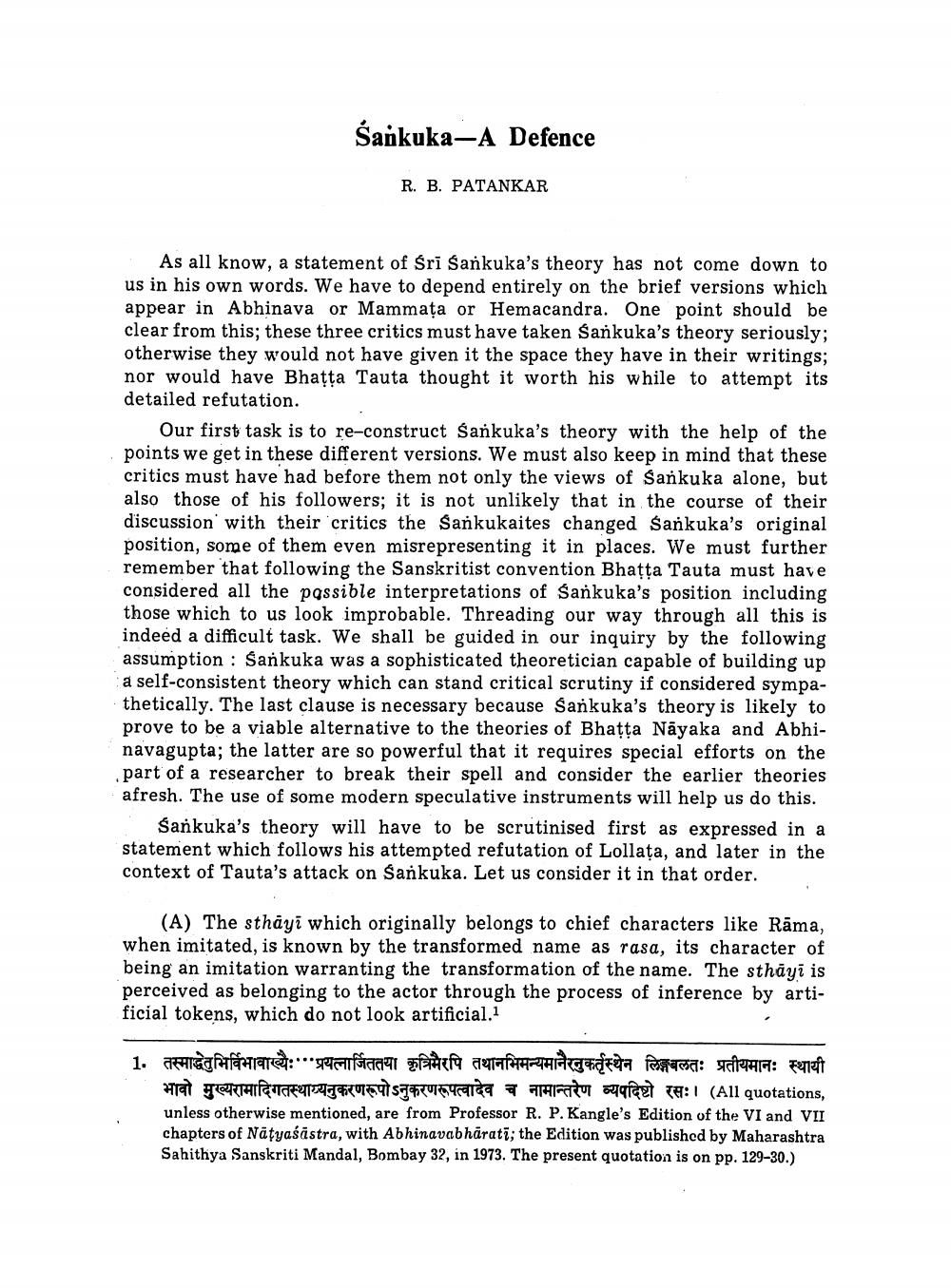________________
Śankuka-A Defence
R. B. PATANKAR
As all know, a statement of Sri Sankuka's theory has not come down to us in his own words. We have to depend entirely on the brief versions which appear in Abhinava or Mammața or Hemacandra. One point should be clear from this; these three critics must have taken Sankuka's theory seriously; otherwise they would not have given it the space they have in their writings; nor would have Bhatta Tauta thought it worth his while to attempt its detailed refutation.
Our first task is to re-construct Sankuka's theory with the help of the points we get in these different versions. We must also keep in mind that these critics must have had before them not only the views of Sankuka alone, but also those of his followers; it is not unlikely that in the course of their discussion with their critics the Sankukaites changed śankuka's original position, some of them even misrepresenting it in places. We must further remember that following the Sanskritist convention Bhatta Tauta must have considered all the possible interpretations of Sankuka's position including those which to us look improbable. Threading our way through all this is indeed a difficult task. We shall be guided in our inquiry by the following assumption : Sankuka was a sophisticated theoretician capable of building up a self-consistent theory which can stand critical scrutiny if considered sympathetically. The last clause is necessary because Sankuka's theory is likely to prove to be a viable alternative to the theories of Bhatta Nayaka and Abhinavagupta; the latter are so powerful that it requires special efforts on the part of a researcher to break their spell and consider the earlier theories afresh. The use of some modern speculative instruments will help us do this.
Sankuka's theory will have to be scrutinised first as expressed in a statement which follows his attempted refutation of Lollata, and later in the context of Tauta's attack on Sankuka. Let us consider it in that order.
(A) The sthāyī which originally belongs to chief characters like Rāma, when imitated, is known by the transformed name as rasa, its character of being an imitation warranting the transformation of the name. The sthāyi is perceived as belonging to the actor through the process of inference by artificial tokens, which do not look artificial.1
1. तस्माद्धतुभिर्विभावाख्यैः "प्रयत्नार्जिततया कृत्रिमैरपि तथानभिमन्यमानैरनुकर्तृस्थेन लिङ्गबलतः प्रतीयमानः स्थायी
Hat TERTHIETSTATUT Sateur 469159 TAHIRITO reet TH:(All quotations, unless otherwise mentioned, are from Professor R. P. Kangle's Edition of the VI and VII chapters of Nāțyaśāstra, with Abhinavabhāratī; the Edition was published by Maharashtra Sahithya Sanskriti Mandal, Bombay 32, in 1973. The present quotation is on pp. 129-30.)




